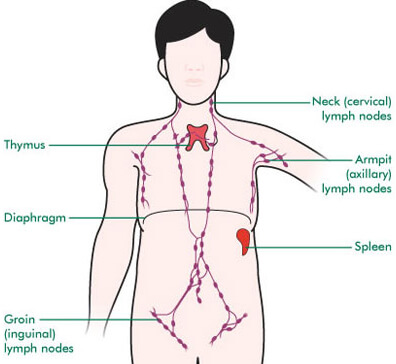Does Kidney Cancer Spread to the Neck?
Typically, the metastasis of cancer is likely to spread most often to 1-2 places. The same goes for advanced kidney cancer. There are particular places in the body where it usually spread to. Does it also spread to the neck? And what are the symptoms if it has spread?
 Cancer staging is important to describe how far the cancer has grown and spread. It is also required to help determine the treatment plan.
Cancer staging is important to describe how far the cancer has grown and spread. It is also required to help determine the treatment plan.
This stage has a significant effect on the prognosis and outlook of the disease. In general, early stage of cancer is easier to treat and has better prognosis than if it has become advanced.
There are two common ways for cancer staging; TNM staging and cancer-stage grouping (number staging system).
TNM staging system
As the name implies, this system stands for T, N, and M. T means tumor that describes how large it has grown:
- Tx, a condition of when the cancerous tumor is still not able to evaluate.
- T1, the cancerous tumor is found in the kidney and the size is not more than 2.76 inches (7 cm) across.
- T2, the cancerous tumor is now bigger in size, larger than 2.76 inches across but it’s still completely inside the kidney.
- T3, the cancer has grown into the perinephric tissue (fatty, connective tissue around the kidney) or into the main veins. But it is still not found in the adrenal gland (a small gland on the top of the kidney). And it also has not spread beyond an envelope of tissue surrounding the kidney called Gerota’s fascia.
- T4, a condition if the cancer has spread further such as found in the adrenal gland or even beyond Gerota’s fascia.
N means node, this describes whether the cancer has spread to the lymph nodes – if so, how many and where!
- N0, the cancer has not found in any lymph nodes.
- N1, the cancer has found in one nearby lymph node.
- N2, if it has spread to more than one regional lymph node.
M means metastasis – it describes whether the cancer has spread (metastasized) to other parts of the body.
- M0, the cancer has not metastasized.
- M1, it has metastasized to other parts /organs of the body beyond the kidney area
Cancer-stage grouping
By combining the T, N, and M classifications – the overall stage of the cancer can be determined as follows:
- Stage I (T1, N0, and M0). The cancerous tumor is 2.76 inches across or smaller and has not found in any lymph node. It is completely inside the kidney.
- Stage II (T2, N0, and M0). The size of the tumor is now larger than 2.76 inches across, but it also has not found in any lymph node or still completely inside the kidney.
- Stage III. The tumor has grown to the regional tissue and possibly found in one nearby lymph node but has not spread to other parts of the body. This stage can be “T1, T2, N1; M0” or “T3, any N; M0”. It is sometimes called locally advanced stage of kidney cancer.
- Stage IV. This means the cancer has spread to the surrounding tissues (beyond Gerota’s fascia and possibly to the adrenal gland on the same side of the affected kidney) and more than one lymph node affected (T4, N2; M0) – or if the cancer has spread (metastasized) to any other organs /parts of the body (any T, any N, but M1).
Cancer cells can break away from the primary tumor and go into the blood or lymph system which then they may spread to other areas of the body and form a new cancerous growth called secondary cancer. When the cancer has spread to any other parts of the body (stage IV), it is also called metastatic stage.
To spread and form a secondary cancer, the cancer cells have to go through the following difficult steps:
- First off, again they need to break away from the primary tumor.
- Then they need to be able to enter the circulation (bloodstream) or lymph system and move through it to another area /new location of the body.
- Once they arrive in a new place, they have to be able to grow and thrive.
- And another challenging step, they need to be able to keep survive and fight against the body’s immune system!
More often, these cancer cells don’t survive. But a few of them may settle in a new place of the body, begin to thrive and form a secondary cancer.

*Image credit to Macmillan
The location between the neck and the kidneys are not close. But there are some blood vessels and lymph vessels that line from the neck to the kidneys. Cancer cells that break away from the primary tumor can spread anywhere, as noted before. Does this mean that kidney cancer can spread to the neck, too?



